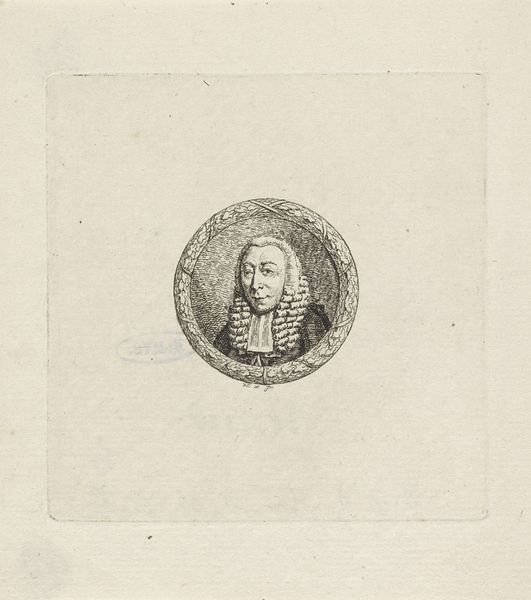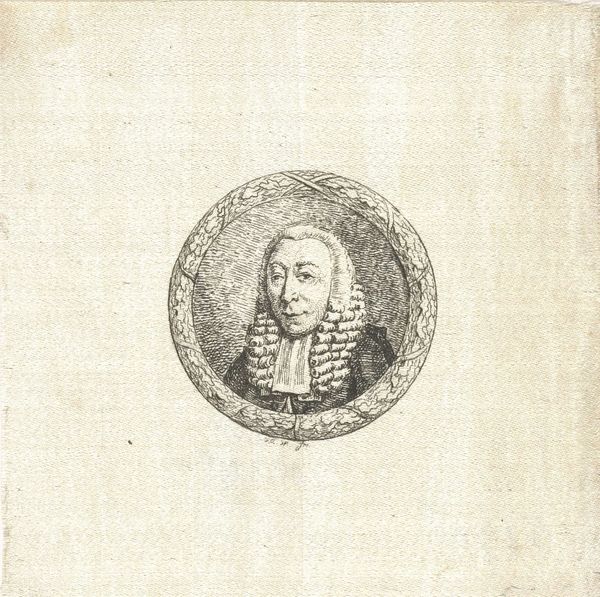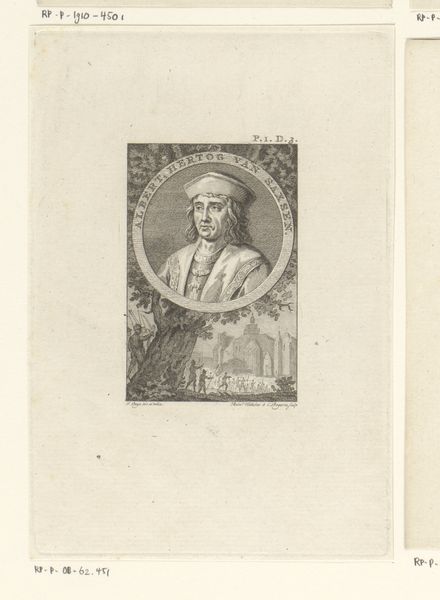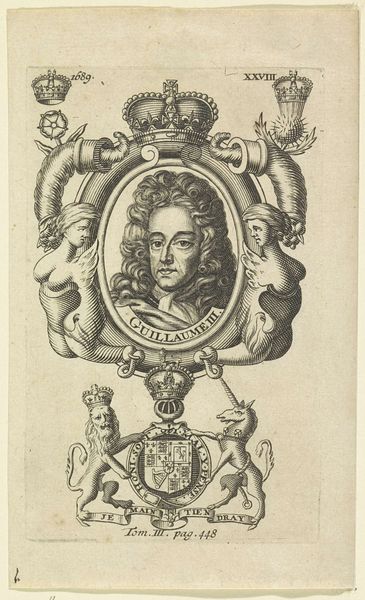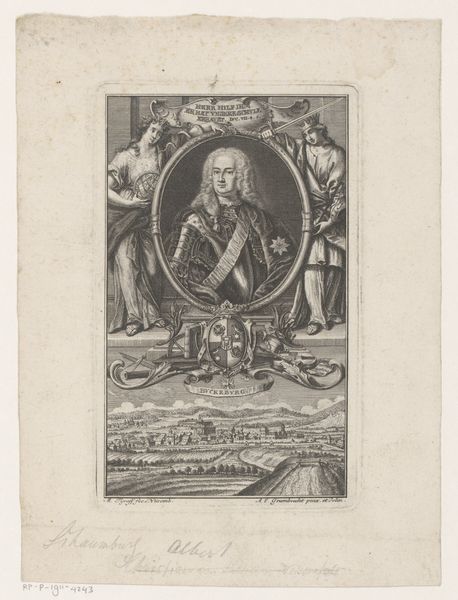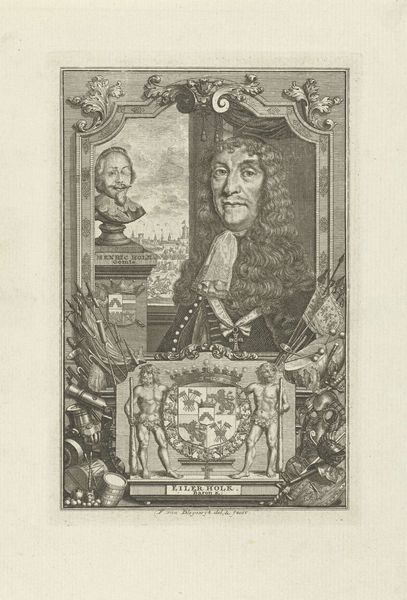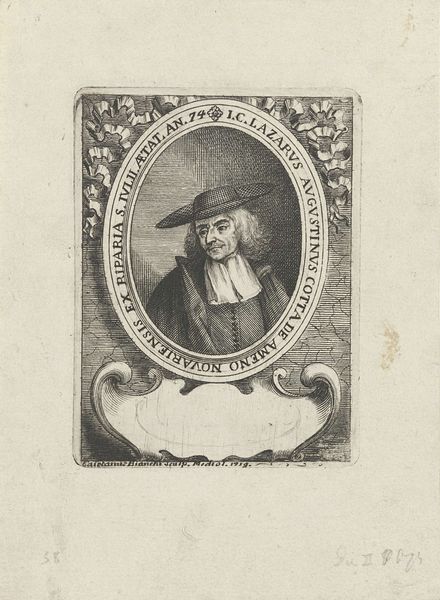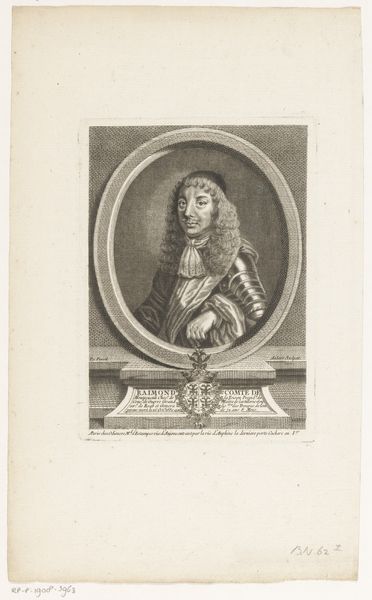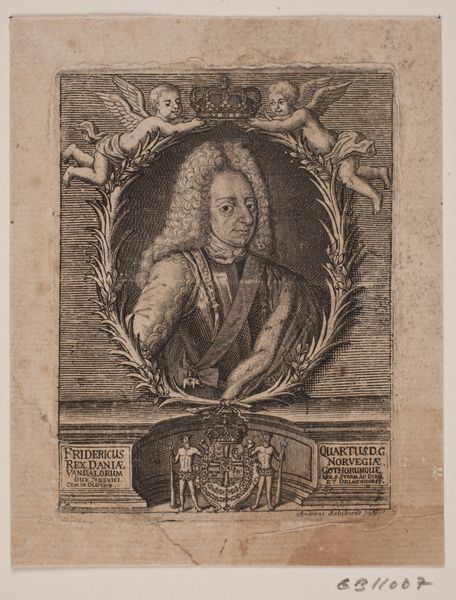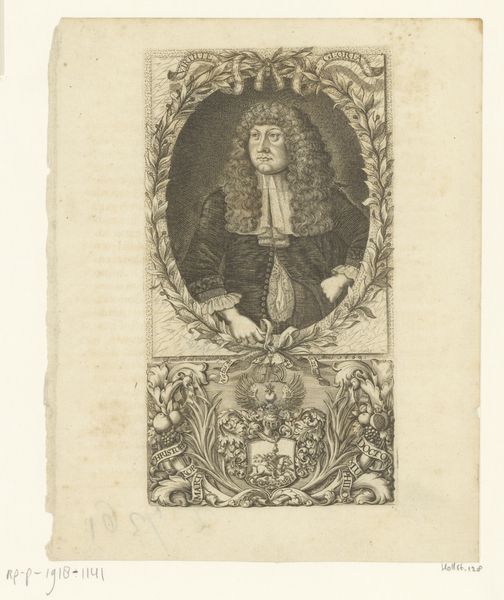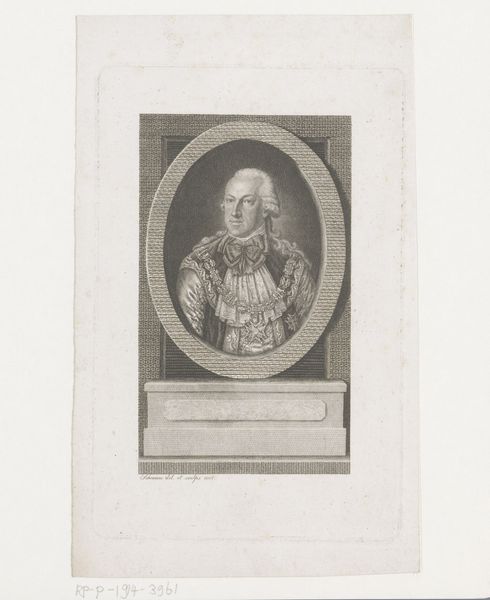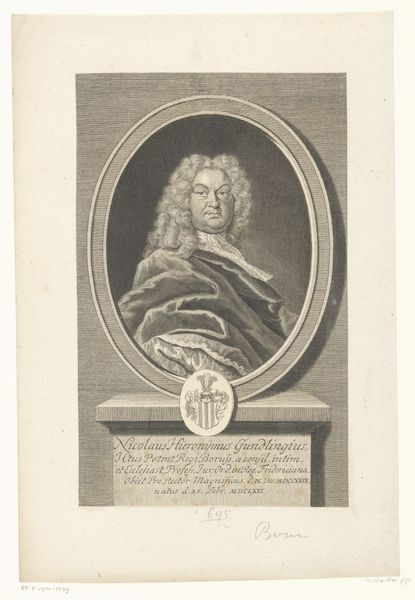
engraving
#
portrait
#
neoclacissism
#
old engraving style
#
academic-art
#
engraving
Dimensions: height 116 mm, width 92 mm
Copyright: Rijks Museum: Open Domain
Curator: Up next, we have a meticulously rendered engraving, "Portret van Hendrik Danielsz. Hooft," created sometime between 1787 and 1794 by Noach van der (II) Meer. The piece resides here at the Rijksmuseum. What strikes you most about it? Editor: It’s the precision! You can practically feel the engraver's hand, the controlled pressure needed to carve these lines into the plate. It gives a sense of the sitter's social position – the wig, the formal attire – a clear symbol of power, laboriously constructed through artisanal means. Curator: Absolutely. The circular frame embellished with radiating motifs and topped with a ribbon further reinforces this sense of controlled presentation and hints at Neoclassical influences, emphasizing order and reason, reflecting Enlightenment ideals of the period. It's a portrait of importance and status. Editor: Status is clearly materialized here! It speaks volumes about the engraver's skill, the printing process itself. Each print would have taken significant time and labor, transforming the sitter into a sort of reproducible commodity of influence. We also can wonder where the paper came from for this! Curator: A fascinating point about commodification! It shifts my perspective to consider how widely images, such as this one, contributed to maintaining established social order. The ribbon itself adds an additional symbolic layer: maybe it represents honour, decorum and elegance. Editor: It's also striking that such a formalized image is created with manual tools: a complete contrast. How long did this labour take? How expensive was the equipment? Engraving highlights the labor hidden within "fine art", allowing more material investigation. Curator: You make it impossible not to think about this. What was once perhaps simply an honorific image transforms into an assertion of power sustained by labor and materiality, shaped and circulated throughout its specific context. Editor: Precisely! It forces us to think beyond the individual portrayed and examine the wider context of production and social impact. Curator: An image to contemplate indeed. Thanks for drawing out the image this way.
Comments
No comments
Be the first to comment and join the conversation on the ultimate creative platform.
